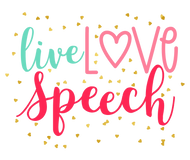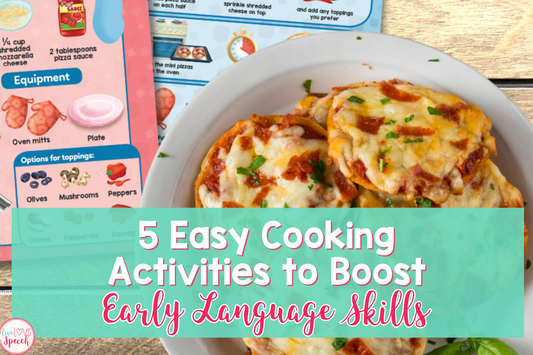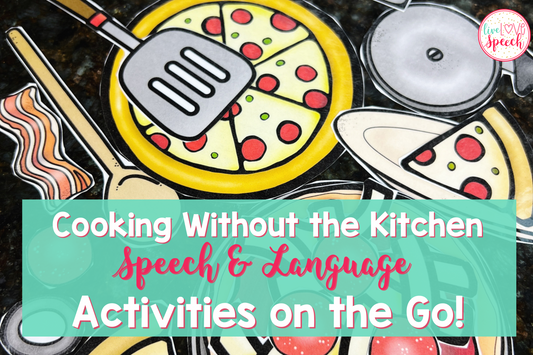
Executive function skills can feel like one of those terms that sounds a little “textbook,” but they’re actually something we rely on every single day.
In simple terms, these are the skills kids need to plan, stay focused, remember instructions, manage time, adapt to changes, and solve problems. Sounds like a lot, right? That’s because it is. Executive functioning doesn’t come naturally to all kids, and honestly, it can be hard to teach directly.
But here’s the good news: there’s a natural, hands-on way to help kids practice these skills without even realizing they’re working on them.
Cooking.
Whether I’m working with a group or just spending time in the kitchen with Landon, I’ve seen firsthand how cooking builds executive functioning in real, meaningful ways. Let's talk about how!
5 Cooking Activities That Support Executive Function
1. Planning and Organization
Before the first ingredient is measured, there’s an important moment that builds executive function: the plan. Cooking teaches kids how to gather materials, organize tools, and understand the order of steps.
My Visual Recipe Cards make this part so much easier. Each card shows clear steps with images and simple words, making it a breeze for kids to follow along. We especially love looking through the options together. Landon always has opinions and enjoys deciding what to make based on what we already have. It’s planning made visual and doable.
Check them out here: Visual Recipe Cards for Kids
2. Working Memory
Working memory is all about holding onto instructions just long enough to do something with them. You know, like remembering: “Add the flour, then stir three times.”
To support this skill, you can:
-
Ask the child to repeat the step back to you before doing it
-
Use visual recipe cards to reinforce what they’re hearing with what they’re seeing
-
Keep directions short and build up gradually
-
Play a quick “remember the step” game before moving forward
When I cook with Landon, I’ll often pause before we begin and say, “Okay, what’s the first thing we do?” It gives him a chance to mentally organize what he just learned and strengthens his memory without pressure
3. Inhibitory Control
Cooking is a natural setting for learning self-control. Waiting to eat, resisting the urge to skip a step, or not touching everything immediately are all teachable moments.
Visual recipes make this easier too. The cards break everything down into small, manageable parts so kids can see exactly where they are in the process. This helps them anticipate what's coming next and builds their ability to wait and follow directions with confidence.
One time, Landon saw “chocolate chips” in a recipe and I saw his hand reaching in. But he looked at the card, realized it wasn’t time yet, and said, “Next step first.” That’s progress.
4. Cognitive Flexibility
Sometimes, the power goes out. Sometimes, you’re out of eggs. And sometimes the batter just doesn’t look right. These unexpected moments are the perfect opportunity to practice cognitive flexibility or the ability to roll with change.
When something doesn’t go as planned, I’ll ask Landon questions like:
-
“What else could we try instead?”
-
“Should we change the order or try a different tool?”
Tip: Keep a list of “easy swaps” nearby, like using applesauce instead of oil or using a spoon when the mixer breaks. This helps kids see that it’s okay to shift and problem-solve without getting frustrated.
The act of adjusting in real time helps kids gain confidence in their ability to adapt, which will benefit them far beyond the kitchen.
5. Problem-Solving
Cooking naturally gives kids a chance to fix things. Spilled flour, missing spoons, batter that’s too dry, it’s all part of the learning process.
Whether it's troubleshooting a mistake, adjusting the recipe, or figuring out how to divide ingredients, these activities help develop critical thinking.
When you include visual recipes, kids can think critically about what’s happening in the process and how to solve issues like “What should we do if the batter is too thick?” or “What can we use instead of an ingredient?”
My Spring-Themed Speech Therapy Pack is designed to enhance these skills while keeping kids engaged and learning. The resource includes:
-
Sequencing activity for making “Dirt Dessert” (color & black/white)
-
Vocabulary Dessert Activity pages with word lists and questions
-
Interactive Toy Pieces for “Dirt Dessert”
-
Visual Recipe, Comprehension Questions, and Vocabulary Cards to make “Dirt Dessert”
-
Visual Recipe Cheat Sheet prefilled with targets for verbs, basic concepts, and questions
These resources encourage kids to problem-solve when things don’t go as planned in the recipe, prompting them to think about what’s next, how to fix mistakes, and how to adjust the process as needed.
How to Make It Work for You

Supporting executive function doesn’t mean cramming in one more thing. Instead, try pacing yourself.
Here’s a simple way to begin:
-
Choose one visual recipe for the week
-
Read it together before starting
-
Prep ingredients ahead if possible
-
Let your child take the lead while you guide and ask questions
You don’t have to squeeze it all in at once. A little bit at a time can make a huge difference. And watching Landon grow in these areas while having fun in the kitchen? That’s the best part.
Want to Learn More?
Want to learn more about language development and early learning through cooking? Check out these blog posts:
Each one is filled with easy ideas to try whether you’re in the classroom, at home, or in therapy sessions.
For more ideas, tips, and resources, be sure to check out my other blog posts. Let's keep making learning enjoyable for both you and your child!








